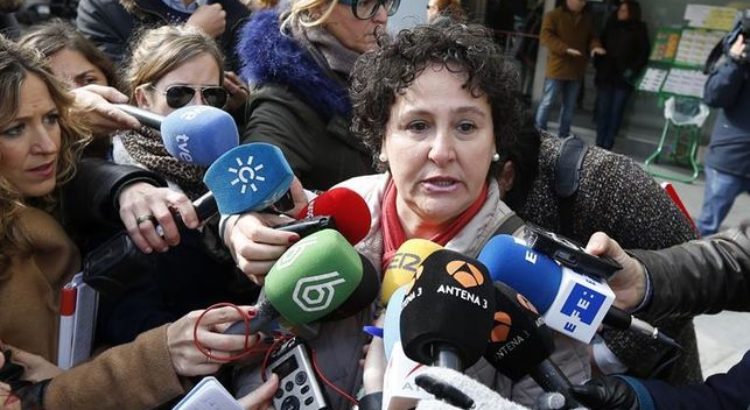Ligar “medidas de gracia penales” con “actos de penitencia religiosa” transgrede (entre otras cosas) la separación de poderes que ha de existir dentro de un Estado aconfesional
Este tipo de indultos lanzan un mensaje confuso a la sociedad y, especialmente, desalentador a la población reclusa no católica, la mayoría
El indulto en este formato vincula de manera errónea “puesta en libertad” con ser un buen católico
Por Violeta Assiego
Este tipo de indultos lanzan un mensaje confuso a la sociedad y, especialmente, desalentador a la población reclusa no católica, la mayoría. El indulto en este formato vincula de manera errónea “puesta en libertad” con ser un buen católico. Algo que para nada responde a los criterios de justicia y equidad que deben valorarse en su concesión.
Comparto con los representantes de Compromís en el Congreso que “la concesión de indultos por la Semana Santa nos acerca más a las dictaduras o regímenes teocráticos que a un Estado de Derecho” y que “por muy mayoritaria sea la religión y costumbre católica en España, otorgarle el privilegio de proponer a quién indultar y que el Gobierno lo acate, nos retrotrae al nacionalcatolicismo más negro”. Pero, en cambio, no puedo compartir su visión de que esta medida es partidista y no responde a criterios objetivos. Es cierto que la actual regulación del indulto necesita importantes mejoras (como prohibir que se conceda a condenados por corrupción o por alguna de las violencias de género), pero los principios en los que se inspira (justicia y equidad) son pilares fundamentales para la construcción de la política penitenciaria restaurativa que recoge nuestra Constitución. De ahí que esta sea una medida que deba tomarse en serio y no como parte del folclore religioso y/o popular o como una forma de devolver favores a las instancias de poder.
Precisamente, en estos días, el protagonismo de estos “indultos” avalados por las cofradías contrasta con el gran fiasco que ha resultado ser el indulto con el que “avaló” el Gobierno a María Salmerón. Acabamos de conocer como el Tribunal Supremo ha anulado el indulto parcial que se le concedió a esta mujer víctima de violencia de género. Medida que la eximía de entrar en la cárcel a cumplir la condena de seis meses de prisión que se le había impuesto por desobedecer la medida de custodia que compartía con el padre de su hija, un hombre condenado a 21 meses de prisión por maltratarla.
La decisión que ahora adopta el Supremo nace de un recurso interpuesto por el propio hombre condenado y por una asociación que dice defender a los perjudicados por la Ley de Violencia de Género. La sentencia sostiene que el Gobierno, cuando concedió el indulto parcial, no acreditó suficientemente las razones de justicia y equidad que son necesarias para su concesión. También añade el Supremo que, al no ser un indulto total, María Salmerón debía cumplir la condena sustitutoria (30 días de trabajos en beneficio de la comunidad) y pagar a su maltratador la cuantía correspondiente a la responsabilidad civil. Algo que al parecer no ha hecho. En su defensa, María Salmerón, afirma que de lo primero no ha recibido notificación y que a lo segundo no ha podido hacer frente, pero que su ex ya está cobrando la indemnización se le han embargado las cuentas a tal efecto. A todo esto, la hija común, de 17 años, se niega a ver al padre.
Dos hechos bien distintos ante la misma hipotética medida de gracia. Frente a ellos, el Gobierno actúa desde miradas y creencias muy dispares. Mientras que, a la Iglesia Católica, año tras año, le otorga el privilegio de solicitar indultos que le sirven para dar cumplimiento a sus tradiciones y dogmas; a una mujer víctima de violencia de género le perdona a regañadientes y de forma parcial, dejándola expuesta al hostigamiento del hombre que la maltrató y condenándola a la ruina económica que implican el laberinto judicial en el que se tiene que embarcar para defender algo que las leyes dicen proteger: el interés del menor.
No es nuevo el distinto rasero que usan los poderes a la hora de velar por la justicia y la equidad pero nunca está de más anotar en el margen como se arraigan privilegios y desgastan derechos. Esto sí que viene siendo una tradición en el Gobierno de Rajoy.
Fuente: https://www.eldiario.es/zonacritica/Indultar-Semana-Santa-Maria-Salmeron_6_754934526.html







 Users Today : 54
Users Today : 54 Total Users : 35460263
Total Users : 35460263 Views Today : 73
Views Today : 73 Total views : 3418968
Total views : 3418968